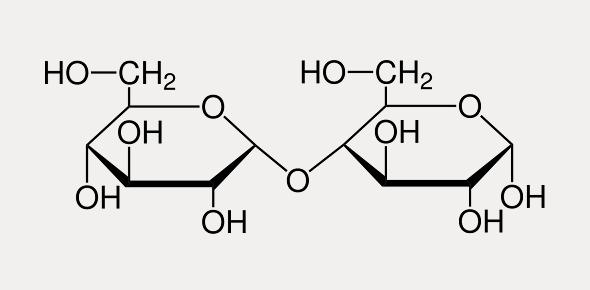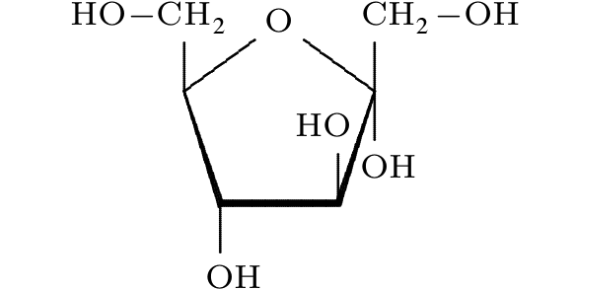Biochemistry Quiz On Carbohydrates

Carbohydrates are the fuel that provides energy to the human body. This Biochemistry quiz on carbohydrates tests your understanding of carbohydrates and other complex chemical phenomena related to the human body. The quiz contains various questions ranging from easy, medium, to hard levels aimed not only to test your knowledge but also to provide you with valuable learning. If you find the quiz helpful, do share it with your friends. All the best!
Biochemistry Questions and Answers
- 1.
Which of these elements is NOT a constituent of Carbohydrates?
- A.
Carbon
- B.
Hydrogen
- C.
Oxygen
- D.
Nitrogen
Correct Answer
D. NitrogenExplanation
Carbohydrates strictly consist of Carbon, and the components of Water ('hydro') - Hydrogen & Oxygen. Hence, Carbo+HydrateRate this question:
-
- 2.
Another word that might describe complex carbohydrates is...
- A.
Monosaccharide
- B.
Disaccharide
- C.
Polysaccharide
- D.
None of the above
Correct Answer
C. PolysaccharideExplanation
"poly" means "many"; a complex carbohydrate consists of many simpler carbohydrate molecules linked together.Rate this question:
-
- 3.
Carbon is the basis for carbohydrates and all other biologically important molecules. All of the following are reasons why Carbon lends itself to being the basic building block of life on our planet - except for one. Which statement is incorrect?
- A.
Carbon readily makes four stable bonds in single, double, or triple configurations.
- B.
Carbon is a very dense & heavy element, giving living things stability.
- C.
Carbon is the least electronegative non-metal
- D.
Carbon has a high affinity for Oxygen & Hydrogen, which make bonds easily with C.
Correct Answer
B. Carbon is a very dense & heavy element, giving living things stability.Explanation
Carbon is not so dense and heavy as to be the reason for stable biomolecules. Their stability comes from a variety of factors, including bonds, molecule shape, size & molecular mass.Rate this question:
-
- 4.
As a component of Carbohydrates, Oxygen is very important, too. Which of the following statements is incorrect about the way Oxygen behaves as part of a molecule?
- A.
Oxygen has six outer valence electrons, and makes up to 2 bonds.
- B.
Oxygen is highly electronegative; it is an 'electron hog', sharing them unevenly.
- C.
The uneven sharing of electrons results in Oxygen forming polar covalent bonds.
- D.
The presence of oxygen in Carbohydrates makes them highly insoluble in water.
Correct Answer
D. The presence of oxygen in Carbohydrates makes them highly insoluble in water.Explanation
Actually, the reverse is true: Oxygen enhances a molecule's solubility in water.Rate this question:
-
- 5.
Which of these functional groups are you not going to find in a carbohydrate?
- A.
Carbonyl -C=O
- B.
Sulfhydryl -SH
- C.
Hydroxyl -OH
- D.
Ether -C-O-C-
Correct Answer
B. Sulfhydryl -SHExplanation
Sulfur is not a component of the Carbohydrates. It is found in some amino acids & proteins.Rate this question:
-
- 6.
Which of the following carbohydrates does this structural diagram represent?
- A.
Glucose
- B.
Fructose
- C.
Maltose
- D.
Sucrose
Correct Answer
A. GlucoseExplanation
The structural diagram represents glucose, a simple sugar and monosaccharide. Glucose is an important carbohydrate in the body and is used as a source of energy. It is a hexose sugar, meaning it has six carbon atoms. The diagram shows the arrangement of the carbon, hydrogen, and oxygen atoms in glucose, with a ring structure formed by five carbon atoms and an oxygen atom.Rate this question:
-
- 7.
Which of the following carbohydrates does this structural diagram represent?
- A.
Glucose
- B.
Fructose
- C.
Maltose
- D.
Sucrose
Correct Answer
C. MaltoseExplanation
The structural diagram represents maltose because it shows two glucose molecules linked together by a glycosidic bond. Maltose is a disaccharide composed of two glucose units, and the diagram accurately depicts this structure. Glucose is a monosaccharide, fructose is a different monosaccharide, and sucrose is a disaccharide composed of glucose and fructose. Therefore, the correct answer is maltose.Rate this question:
-
- 8.
Which of the following carbohydrates does this structural diagram represent?
- A.
Glucose
- B.
Fructose
- C.
Maltose
- D.
Sucrose
Correct Answer
B. FructoseExplanation
The structural diagram represents fructose because it matches the chemical structure of fructose, which is a monosaccharide with a five-carbon ring structure. Glucose, maltose, and sucrose have different structural arrangements and do not match the diagram.Rate this question:
-
- 9.
Which of the following carbohydrates does this structural diagram represent?
- A.
Glucose
- B.
Fructose
- C.
Maltose
- D.
Sucrose
Correct Answer
D. SucroseExplanation
The structural diagram provided represents sucrose. Sucrose is a disaccharide composed of one glucose molecule and one fructose molecule joined together by a glycosidic bond. The diagram shows the two monosaccharides connected by this bond, indicating that it is sucrose.Rate this question:
-
- 10.
The diagrams below show a complex carbohydrate in some of your body cells. Which complex carbohydrate is it?
- A.
Cellulose
- B.
Chitin
- C.
Glucagon
- D.
Glycogen
Correct Answer
D. GlycogenExplanation
Glycogen is the main storage polysaccharide in mammalian bodies. Your liver & some large skeletal muscles store it.Rate this question:
-
- 11.
The sugars glucose, fructose, and galactose all belong to which category of carbohydrates?
- A.
Monosaccharides
- B.
Disaccharides
- C.
Polysaccharides
Correct Answer
A. MonosaccharidesExplanation
They're all single-ring structures, hence 'mono'.Rate this question:
-
- 12.
The sugars lactose, maltose, and sucrose all belong to which category of carbohydrates?
- A.
Monosaccharides
- B.
Disaccharides
- C.
Polysaccharides
- D.
None of the above
Correct Answer
B. DisaccharidesExplanation
They all have a double ring structure, hence 'di'Rate this question:
-
- 13.
The diagram below shows the most common reaction that helps more complex carbohydrates form. What is the name of the reaction?
- A.
Hydrolysis
- B.
Dehydration synthesis
- C.
Dehydoxylation
- D.
Hydration
Correct Answer
B. Dehydration synthesisExplanation
It's a removal of water (O + OH = H2O) (dehydration) that brings together two molecules into one (synthesis).Rate this question:
-
- 14.
Which of the following is NOT a role of Carbohydrates in a cell or organism?
- A.
Provide energy, either immediate or long-term (storage)
- B.
Provide structure, support, and strength in certain organisms.
- C.
Formation of muscle tissues & bone in vertebrate bodies
- D.
Osmoregulation - moderating fluid balance in living organisms
Correct Answer
C. Formation of muscle tissues & bone in vertebrate bodiesExplanation
Although we tend to think of carbs as a high-energy nutrient, they have other roles: chitin makes up the exoskeletons of insects & crustaceans, cellulose is the supporting fibre of herbaceous plants, and starches & sugars play a role in osmoregulation of cells, too. Protein is responsible for forming muscle & bone.Rate this question:
-
- 15.
Which of the following is not a monosaccharide?
- A.
Glucose
- B.
Fructose
- C.
Galactose
- D.
Sucrose
Correct Answer
D. SucroseExplanation
Sucrose is not a monosaccharide because it is a disaccharide composed of two monosaccharides, glucose and fructose, joined together by a glycosidic bond. Monosaccharides, on the other hand, are single sugar molecules that cannot be broken down into smaller sugar units. Glucose, fructose, and galactose are all monosaccharides because they consist of a single sugar unit.Rate this question:
-
Quiz Review Timeline +
Our quizzes are rigorously reviewed, monitored and continuously updated by our expert board to maintain accuracy, relevance, and timeliness.
-
Current Version
-
Feb 27, 2024Quiz Edited by
ProProfs Editorial Team
Expert Reviewed by
Stephen Reinbold -
Feb 04, 2011Quiz Created by
Astosich
- Aeronautics Quizzes
- Aerospace Quizzes
- Agricultural Science Quizzes
- Astrology Quizzes
- Astronomy Quizzes
- Atom Quizzes
- Biology Quizzes
- Biomechanics Quizzes
- Biostatistics Quizzes
- Biotechnology Quizzes
- Botany Quizzes
- Branches Of Science Quizzes
- Cytology Quizzes
- Easy Science Quizzes
- Ecology Quizzes
- Electrical Quizzes
- Embryology Quizzes
- Endocrinology Quizzes
- Engineering Quizzes
- Environmental Science Quizzes
- Epidemiology Quizzes
- Experiment Quizzes
- Forestry Quizzes
- Fossil Quizzes
- Gas Quizzes
- General Science Quizzes
- Genetics Quizzes
- Histology Quizzes
- Human Biology Quizzes
- Integrated Science Quizzes
- Invention Quizzes
- Library Science Quizzes
- Lighting Quizzes
- Liquid Quizzes
- Marine Biology Quizzes
- Microbiology Quizzes
- Nature Quizzes
- Neuroscience Quizzes
- Nuclear Science Quizzes
- Oceanography Quizzes
- Physics Quizzes
- Psychology Quizzes
- Science And Technology Quizzes
- Science Glossary Quizzes
- Science Knowledge Quizzes
- Science Practice Quizzes
- Scientific Method Quizzes
- Scientific Notation Quizzes
- Soil Science Quizzes
- Solar System Quizzes
- Solid Quizzes
- Zoology Quizzes
 Back to top
Back to top








